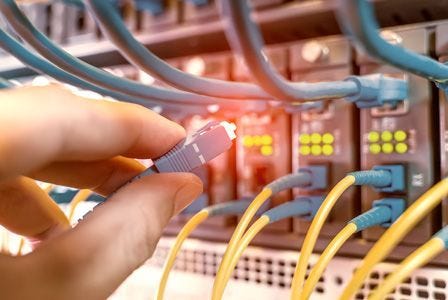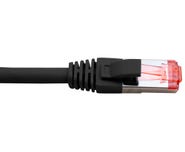

Heat Rise in Communication Cables
In modern-day communication systems, communication cables transmit data signals over long distances. These cables carry various signals, such as voice, video, and data, at high speeds and with minimum interference.
However, the transmission of these signals generates heat, which can harm the performance and lifespan of the communication cables. This article will discuss the reasons for the heat rise in communication cables and its effects on cable performance.
Reasons for Heat Rise in Communication Cables
Several factors are responsible for the generation of heat in communication cables. However, in this article we’ll look at the most common reasons.
- One of the primary reasons is the resistance of the cable itself. When an electrical current flows through a cable, it encounters resistance, which generates heat. The amount of heat generated is proportional to the square of the current flowing through the cable and the resistance of the cable itself.
- Another factor is the heat generated by the electronic devices that drive the signal transmission. These devices, such as amplifiers and repeaters, convert electrical signals into optical signals, or vice versa, to transmit data over long distances. The energy used to power these devices is converted into heat, eventually dissipating into the surrounding environment.
Effects of Heat Rise on Communication Cables
Heat rise in communication cables can adversely affect the cable’s performance. Some of the adverse effects of heat rise in communication cables may include:
- One of the most significant effects is signal attenuation, which occurs when the signal strength decreases as it travels through the cable. The attenuation occurs due to the increased resistance of the cable. As the resistance increases, the signal strength decreases, leading to data loss and degraded signal quality.
- The thermal fluctuations in the cable generate electrical noise that can interfere with the signal transmission. As the temperature of the cable increases, the amount of noise generated also increases, leading to degraded signal quality.
- Heat rise in communication cables can also lead to the breakdown of the cable’s insulation, which can cause a short circuit or complete failure of the cable. The insulation breakdown occurs due to the thermal expansion and contraction of the cable, which can eventually cause cracks and other defects in the insulation.
Conclusion
As promised at the beginning of this informative article, we have highlighted why you will experience a heat rise in communication cables. Moreover, we have also described the harmful effects of heat rise within a communication cable.
Finally, we can say that heat rise in communication cables is a significant issue that can have detrimental effects on cable performance. The heat generation within a communication cable occurs because of the resistance of the cable and the electronic devices used to drive the signal transmission. The effects of heat rise include signal attenuation, increased signal noise, and cable insulation breakdown.
So, to avoid these effects, it is essential to monitor the temperature of communication cables and implement measures to dissipate the heat generated, such as cooling systems and cable insulation materials with high-temperature tolerances.
Recent Articles

Test Network Cabling & Patch Cords FAST with the New DATATESTER by CABAC
Testing LAN cables is quick and easy when you’ve got the new CABAC DATATESTER on hand. This budget LAN cable tester is perfect for contractors who need to test data and coaxial cable for correct termination.
View Products
Exploring the Advantages of Thin Patch Leads
For Australian data installers, selecting the right network components is critical to achieving the performance and reliability that your customers expect. Among these components, the humble patch lead plays a crucial role in interconnecting various devices.
View Products
FOBOT Buying Guide
In this informative article, we will provide a basic buying guide for FOBOTs or “Fibre Optic Break Out Trays” so that you can choose the right product for your specific needs.
View Products
What is a FOBOT?
In this article, we will explain what a FOBOT is and where they are used. We will also describe how a FOBOT works and the important role this component plays in managing and distributing optical fibres efficiently. So, if you're looking to learn all about FOBOTs, make sure to read this article...
View Products
What is the difference between OS1 and OS2 Singlemode Optical Fibre?
This technical article delves into the differences between OS1 and OS2 Singlemode fibre optics, including their core characteristics, performance specifications, and ideal applications.
View Products




















